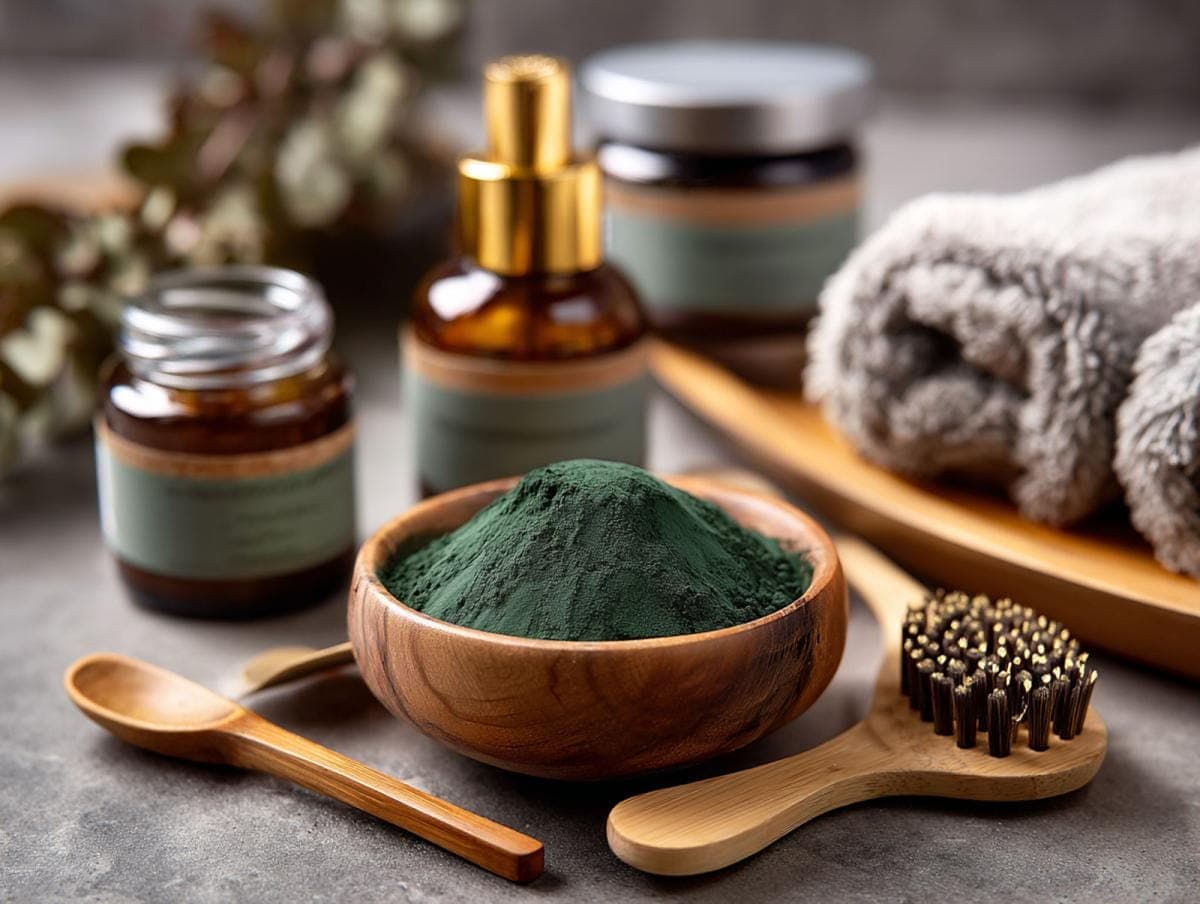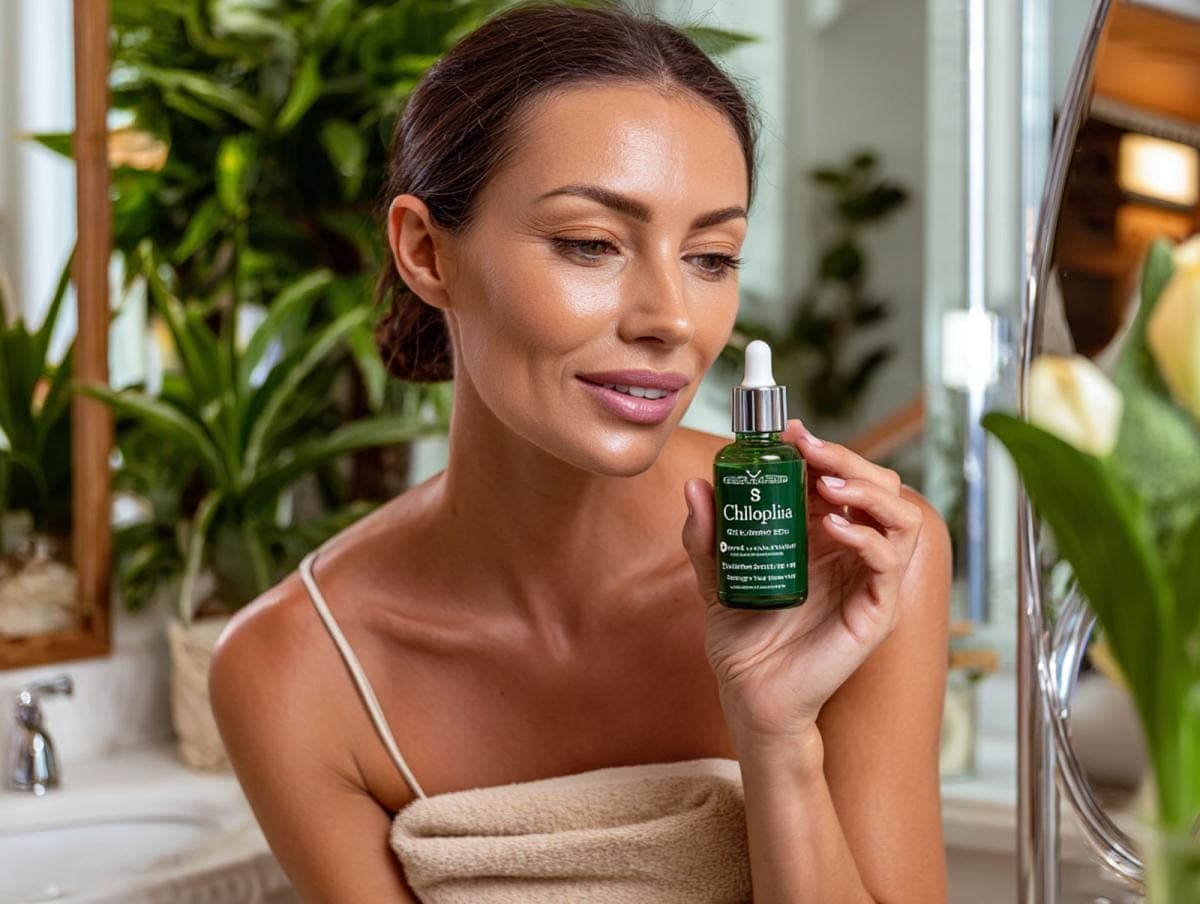Beauty, Skincare, Trends & Opinions
Chlorella: The Green Algae that Revitalizes Your Skin
If you click on links we provide, we may receive compensation.
There’s a tiny, single-celled green alga quietly making waves in the skincare world, and it’s not just because it sounds like something you’d find in a smoothie. Chlorella, a nutrient-dense freshwater algae, has steadily climbed the ranks from wellness supplement to skincare essential. It’s packed with skin-loving nutrients and backed by growing research for its ability to protect, heal, and rejuvenate your complexion.
The appeal of Chlorella isn’t just marketing gloss. This algae has an unusually rich profile of vitamins, minerals, peptides, and antioxidants. It’s shown real promise for helping firm the skin, reduce inflammation, support collagen production, and even out skin tone. And unlike some trendy ingredients that flash hot and burn out fast, Chlorella is proving itself as a versatile, long-term ally in maintaining healthy, radiant skin. So what makes this tiny green cell such a big deal in skincare? Let’s break it down.
What Exactly Is Chlorella?
Chlorella is a genus of single-celled green algae that naturally grows in freshwater. First discovered in the 1890s, it’s been studied for over a century and became widely used in Asia as a dietary supplement. It contains chlorophyll (hence the vibrant green), along with high concentrations of protein, beta-carotene, B vitamins, iron, zinc, and more.
Its outer cell wall is famously tough – so tough, in fact, that it has to be mechanically cracked or broken to make the nutrients bioavailable. This thick wall has an interesting side benefit in skincare: it helps bind environmental toxins and pollutants, making Chlorella a natural detoxifier both inside and out.
Because of its impressive nutritional profile, Chlorella is often compared to spirulina. But the two are quite different. Spirulina is a blue-green algae with no cellulose wall and a different nutrient makeup. When it comes to skincare, Chlorella’s high chlorophyll and peptide content gives it an edge in rejuvenation, regeneration, and brightening.
How Does Chlorella Benefit Your Skin?
You might expect a plant-based ingredient to hydrate or soothe – and yes, Chlorella can do that. But what surprises many people is just how active and restorative it is. Here’s what the science – and anecdotal evidence – say about its top skincare benefits:
1. Promotes Collagen Synthesis
One of Chlorella’s most talked-about properties is its ability to stimulate collagen production. In-vitro studies show that Chlorella extract increases the expression of collagen proteins, helping firm and plump the skin. That’s largely thanks to small peptides and amino acids found in the algae that trigger dermal fibroblasts – the cells responsible for creating collagen and elastin.
In practical terms, this means Chlorella may help reduce the appearance of fine lines, wrinkles, and sagging skin with regular use. It’s not a miracle worker, but as part of a broader anti-aging routine, it’s a solid addition.
2. Fades Pigmentation and Brightens Skin Tone
Chlorella is rich in lutein and beta-carotene, two powerful carotenoids that help regulate melanin production. Over time, that can mean a more even skin tone and reduced hyperpigmentation. There’s also emerging evidence that Chlorella can inhibit tyrosinase activity – the enzyme that fuels melanin synthesis – similar to ingredients like kojic acid or licorice root extract.
Brightening serums and masks containing Chlorella extract are becoming popular among people trying to manage sunspots, acne marks, or dull, uneven complexions.
3. Helps Protect Against Pollution and UV Stress
City skin? Then Chlorella might be your new favorite shield. One of its more impressive properties is its ability to neutralize the effects of environmental stressors, especially pollutants and UV radiation. Chlorella’s chlorophyll content – the highest of any plant – acts as a natural antioxidant, scavenging free radicals before they damage skin cells.
Some researchers suggest Chlorella can reduce photoaging effects like fine lines and texture changes caused by repeated sun exposure. Its detoxifying outer cell wall may also help bind heavy metals and particulate matter, keeping your skin clearer and less inflamed in urban environments.
4. Calms Inflammation and Supports Barrier Health
Chlorella isn’t just for those with aging concerns. If your skin is sensitive, reactive, or prone to redness, this algae can help calm things down. Studies show Chlorella has anti-inflammatory properties, likely due to its mix of omega-3 fatty acids, zinc, and polysaccharides. These compounds help regulate inflammatory pathways and support the skin’s protective barrier.
Over time, this leads to less redness, fewer flare-ups, and better resilience. Chlorella can even be found in formulations for rosacea, eczema, and sensitive skin types thanks to these effects.
5. Supports Wound Healing and Skin Regeneration
One lesser-known property of Chlorella is its role in skin recovery. It’s often included in post-procedure creams and ointments because it supports fibroblast activity and cell turnover. When your skin is healing from a breakout, chemical peel, or even sunburn, ingredients that gently encourage new cell growth can make a difference.
Chlorella’s protein-building amino acids and rich B-vitamin content, especially biotin and niacin, are essential to this process. They help rebuild the skin matrix and restore a smooth, even texture over time.

Is Chlorella Suitable for All Skin Types?
Generally, yes. Chlorella is well tolerated by most skin types, including sensitive, acne-prone, or mature skin. It’s non-comedogenic and doesn’t strip or irritate. That said, formulations matter.
In a serum, you might find Chlorella paired with hyaluronic acid or vitamin C to amplify hydration and glow. In a cream, it could be blended with lipids like jojoba or ceramides to support barrier repair. Some people may experience mild purging or tingling from certain blends – particularly if other actives like retinoids or exfoliants are included – but the algae itself is not known to cause reactions.
For those with algae allergies (rare, but possible), patch testing is always smart. And if you’re using it in supplement form, check with your doctor, especially if you’re on blood thinners or have autoimmune issues. Chlorella contains high amounts of vitamin K and immune-stimulating compounds that can interfere with medications.
How Is Chlorella Used in Skincare Products?
Chlorella shows up in everything from serums to masks to moisturizers – and even a few cleansers and toners. You’ll often find it listed as Chlorella Vulgaris Extract or Chlorella Pyrenoidosa Extract on an ingredient label. Sometimes it’s delivered in liposomal form, which helps it absorb more efficiently into the skin.
Here are a few common product types where Chlorella plays a key role:
- Brightening Serums – Often paired with niacinamide or licorice, Chlorella helps reduce pigmentation and support clarity.
- Firming Creams – These combine Chlorella with peptides or retinol alternatives to encourage collagen and elasticity.
- Soothing Masks – Especially for sensitive or inflamed skin, Chlorella calms and repairs.
- Eye Creams – The antioxidant profile helps reduce puffiness, dark circles, and fine lines around delicate skin.
- Sunscreen Boosters – Some SPF formulas now include Chlorella for added antioxidant defense against UV damage.
Are There Any Studies Backing Chlorella’s Skincare Claims?
Yes, though most are in-vitro or animal studies at this point. A few key findings include:
- A 2010 study published in Phytotherapy Research found that Chlorella extract improved collagen synthesis in human skin fibroblasts and inhibited matrix metalloproteinase (MMP) activity – enzymes that degrade collagen during aging.
- A 2018 study in Oxidative Medicine and Cellular Longevity showed that Chlorella extracts protected skin cells from oxidative stress and UVB-induced damage, suggesting anti-aging and anti-inflammatory potential.
- Several patents have also been filed on Chlorella-derived peptides for use in skin-tightening and firming cosmetics.
That said, more peer-reviewed, large-scale clinical studies are still needed to confirm long-term effects. But based on early evidence, the outlook is promising.
Is Chlorella Safe for Daily Use?
Yes. Chlorella is safe for regular topical use and is often well tolerated, even when used morning and night. Like with any antioxidant or bioactive botanical, consistency matters more than quantity. A product containing even 1–3% Chlorella extract can be effective over time.
If you’re layering Chlorella-based products with strong actives like AHAs, retinol, or vitamin C, space them out to minimize potential irritation. And if you’re using it in supplement form alongside skincare, be mindful of dosage to avoid side effects like upset stomach or sensitivity to light.
What’s the Difference Between Using Chlorella Topically and Taking It as a Supplement?
This is a fair question because Chlorella’s origins are nutritional, not cosmetic. Taking Chlorella as a dietary supplement supports skin health from the inside out. Its rich supply of chlorophyll, iron, omega-3s, and detoxifying compounds can improve circulation, reduce inflammation, and encourage healthier, clearer skin over time.
Topical use, on the other hand, delivers these benefits right to the skin’s surface – helping improve tone, hydration, firmness, and barrier function more directly. For many, the best approach is a mix of both. Think of it like drinking green tea and applying a green tea serum: you get systemic and surface-level benefits together.

Can Chlorella Replace Other Popular Actives?
Not really – and it doesn’t need to. Chlorella plays well with others. It doesn’t compete with niacinamide, vitamin C, or peptides. In fact, it complements them. Many formulations pair Chlorella with hyaluronic acid for hydration or bakuchiol for firming. It’s a gentle antioxidant that can fill in the gaps left by more aggressive ingredients.
If you’re looking for something that supports your skin without irritating it, Chlorella is a smart ingredient to add. Especially if you’re recovering from overuse of retinoids or acids or just want a more natural route to healthier skin.
Where Can You Find the Best Chlorella Skincare Products?
Here are a few Chlorella-based skincare options you can try right now:
OSEA Ocean Cleansing Mudd – A mineral-rich, algae-powered cleanser featuring Chlorella for detoxifying city skin.
Odacité Green Smoothie Quenching Crème – A hydrating moisturizer with Chlorella and spirulina for combination and dry skin.
FAQs About Chlorella in Skincare
Can I use Chlorella if I have acne-prone skin?
Yes. Chlorella is non-comedogenic and has mild anti-inflammatory properties that may help soothe breakouts and support post-acne healing.
Is Chlorella the same as spirulina?
No. They’re both algae, but Chlorella is a green algae with a tough cell wall and higher chlorophyll content, while spirulina is blue-green and has a different nutrient profile.
How long does it take to see results with Chlorella skincare?
Most people notice subtle improvements in tone, texture, and hydration after 2–4 weeks of consistent use. Collagen-boosting benefits may take longer.
Can I make a DIY Chlorella mask at home?
Yes. You can mix powdered Chlorella with yogurt or aloe vera gel for a simple at-home brightening and soothing mask. Just patch test first.
Are there any side effects of using Chlorella topically?
Very few. It’s generally well tolerated, but some people may react to other ingredients in the formula rather than Chlorella itself.
Chlorella may be tiny, but it’s anything but basic. This vibrant green algae delivers real benefits for all skin types, especially those looking to improve tone, texture, and barrier health. With regular use, it supports collagen, reduces inflammation, and helps your skin adapt to daily environmental stress.
In a skincare world full of flashy trends and fast fades, Chlorella stands out for one reason: it works. It’s been around for over a billion years – and your skin just might thank you for making it part of your daily routine.




